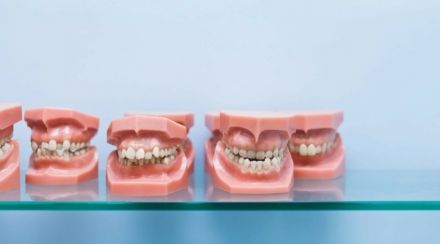Here’s our guide for how to choose orthodontic treatment as an adult.
The first thing we notice when we meet someone is their smile. Over more recent years, many adults are getting orthodontic treatment to give themselves a confident smile they’re proud of.
Modern orthodontic treatments give you a wide range of options to get the smile you want, including metal, clear or behind-the-teeth braces or clear aligners (such as Invisalign).
Here is our guide for choosing orthodontic treatment as an adult.
When’s the best time to start treatment as an adult?
The good news is that it is never too late to improve your smile, or problems like overbite. If you’re self-conscious about the state of your teeth, then orthodontic treatment can help give you the confidence to live a happier, healthier life.
No referral is needed
If you have any concerns about your teeth or bite, you can book in to see an orthodontist for an initial assessment – no referral is necessary.
Read: How to choose an orthodontist
An initial assessment
During the first appointment, the orthodontist will perform a thorough examination of your face, teeth and bite. They may take a panoramic (OPG) x-ray of your teeth to help their assessment. They’ll explain what’s needed and the key milestones for your treatment, if you choose to proceed.
When you book in an initial consultation you are not committing to any treatment. It just gives you a chance to get a specialist orthodontist’s opinion and hear their advice for treatment options.
How long can treatment take?
Orthodontic treatment can last anywhere from 6 months to over 2 years, depending on your case. For example, rotating a single tooth may be achieved in a few short months, but guiding a tooth down and pushing it into alignment with the rest of your teeth may take longer. Correcting jaw alignment and fixing your bite may also take longer to correct.
A number of companies out there claim to be able to treat all orthodontic cases in as little as 6 months. But they tend to only straighten the front teeth without correcting underlying bite issues, making them an incomplete and sometimes unsafe form of treatment.
No matter the length of your treatment, a successfully completed treatment will generally be far better than one that is rushed.
How many appointments are needed?
Your orthodontist will be able to advise you of how frequently you should be booking in for an adjustment or assessment throughout your treatment. That will help you work out your budget for the course of your treatment.
It might be tempting to skip an appointment here or there, but these regular check-ins and adjustments are crucial to ensure that your treatment progresses smoothly, and your smile is the best it can be.
What is combined care and why is it sometimes necessary?
Adult treatment can be more complex than adolescent treatment due to a variety of factors. In certain situations, different dental professionals will work together as a team to deliver you comprehensive care.
For example, treatment can only be carried out when there is an absence of dental disease. Input from your general dentist or a hygienist may be necessary to get you ‘dentally fit’ before starting orthodontic treatment.
Sometimes orthodontists will move teeth to make space for fillings or replacement teeth. You will then usually see another member of the dental team to do the restorative work. Also, in non-growing adults, treatment results are not always possible without surgical intervention.
Who could be involved in an orthodontic treatment plan?
To get you an ideal outcome as an adult, orthodontists will often work with other dental professionals including your general dentist, hygienists or other specialists such as:
- Oral and Maxillofacial Surgeons
- Prosthodontists
- Periodontists
- Endodontists
When is Corrective Jaw Surgery (Orthognathic Surgery) needed?
When an adult has a significant mismatch in the size of their jaws, often their bite cannot be corrected with orthodontics alone. In these situations, an orthodontist will work with an Oral and Maxillofacial Surgeon.
Space optimisation for missing teeth
Orthodontics may be needed to make space for prosthetic replacement of missing or extracted teeth. Treatment for this usually requires a team approach. The orthodontist will liaise with a restorative dentist or prosthodontic specialist to decide which spaces are to be optimised. They will also commonly work in with a Maxillofacial Surgeon or specialist periodontist if an implant is the desired replacement tooth option.
Is surgery often needed?
Not at all! Most adults can complete orthodontic treatment with braces or aligners, without the need for any surgery.
Is there such a thing as invisible braces?
Modern braces and aligners offer new solutions compared to what was available years ago.
If you would like to achieve a smile you’re proud of, but don’t want it to be obvious that you have braces, ask your orthodontist about options like lingual (invisible) braces and clear aligners. With those options, most people won’t even know you are having orthodontic treatment.
Will braces affect my lifestyle?
If you’re considering braces as an adult, you may have concerns about how they will affect your daily life.
Rest assured; the benefits far outweigh any temporary adjustments you may need to make. Adult braces should be viewed as a long-term investment in your oral health and overall happiness with the benefits of straight healthy teeth extending far beyond the duration of treatment. You can learn more here: How To Make Sure Braces Don’t Affect Your Lifestyle
What treatment is right for me?
Your orthodontist can help you to understand which of the available treatment options will be best for you.
Between fixed and removable plates, metal braces, ceramic braces, lingual (invisible) braces and clear aligners, there are treatments to suit every need and lifestyle. It is best to make an appointment with your orthodontist prior to deciding on the treatment option you would like, because every case is different and may require a particular orthodontic treatment option.
Next Step: Choose an Orthodontist
To next step is to choose an orthodontist.
You can read our guide about How to Choose an Orthodontist, or use our tool to search for an orthodontist near you.




